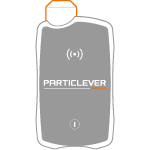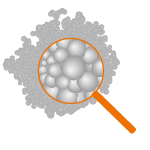Food/pharmaceuticals


Although new nanodrugs are under development, the pharmaceutical industry is increasingly faced with an issue that it shares with the food industry, related to additives and processing aids, because they may include nanometric fractions.
The press talks about her frequently, particularly the additives E171 (titanium dioxide) and E551 (amorphous silica). The fact that they contain nanoparticles, separate from potentially mandatory product labeling, is reason enough to verify that the prevention strategies employed in manufacturing areas are suitable.
Key questions
When handling a sizable quantity of powdery dry raw material, it’s practically impossible to prevent particles from being emitted. Simply place a PARTICLEVER Sampler in the emission zone (in the particle cloud if visible to the naked eye) and request an electron microscope observation. PARTICLEVER will be able to tell whether the substance contains nanoparticles.
With respect to E551 (amorphous silica), the information in our possession indicates that most of the intended properties take effect only when the material is in nanoparticulate form. Information about the material's size is therefore important to obtain in order to take into account in the safety strategy.
For E171 (titanium dioxide), in accordance with the recommendations of NIOSH (2011) and INRS (2016) and as a result of the application submitted to the ECHA by France for a CMR classification, it is now wise to assess and potentially strengthen TiO2-related prevention strategies, whether or not it’s in nanoparticulate form.
Because the size distribution of such substances may be complex, PARTICLEVER has advanced techniques for measuring exposure in complex mixtures, such as agglomerate density. This metric has recently been described in the latest scientific literature as being better-suited for measuring exposure doses than specific surface area.



